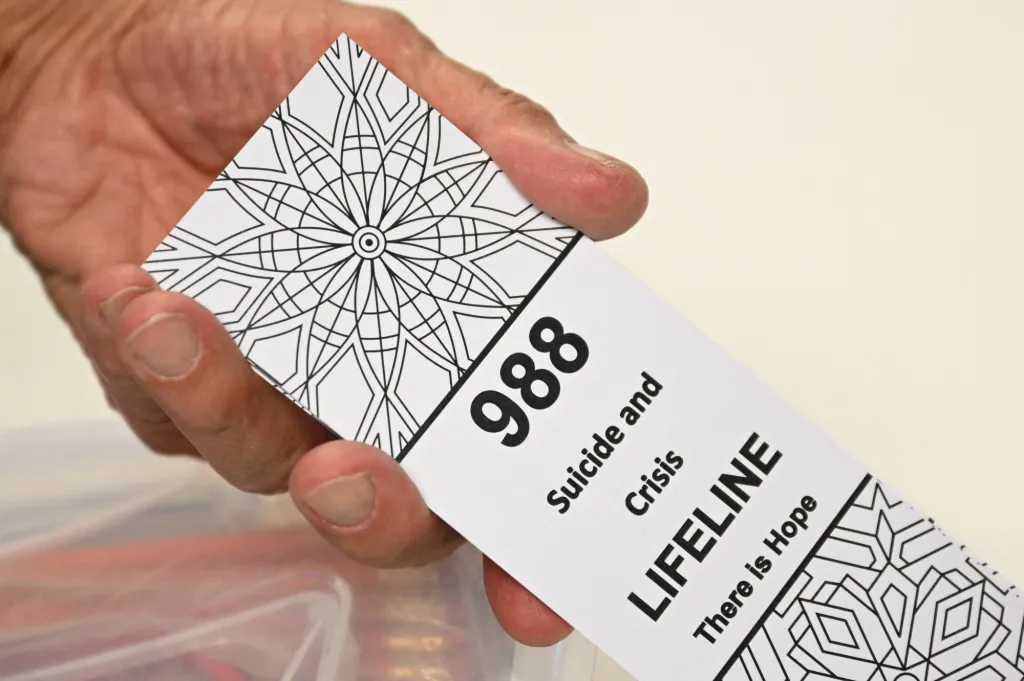
The number of deaths by suicide in Connecticut increased in the last year with 391 reported in 2024 — 38 more suicides than the previous year.
State health officials cautioned that despite the one-year increase between 2023 and 2024, data needs to be examined for several years before determining whether the increase represents a trend.
Dr. Linda Durst, a psychiatrist at UConn Health, pointed to one troubling trend in the state: The state’s suicide rate is increasing at a faster rate than the national average. The state’s suicide rate increased by 45.2% between 1999 and 2022 compared to the national rate of 30.3% in the same time period, Durst said, citing statistics from USAFacts.
Durst also cited concerning national trends regarding youth suicide and women using more lethal methods in committing suicide. Men are more likely to die by suicide than women, Durst said.
“Women make more attempts but men die more,” she said, adding that because women are starting to use more lethal methods, a higher percentage of them are dying.
The Office of the Child Advocate and Gary Steck, chief executive office of Wellmore Behavioral Health, which houses the only 24-7 urgent crisis center in the state in Waterbury, have both said that mental health resources are grossly underfunded to meet the need.
Psychiatrists and therapists said that the pandemic, social media and unrest in the world are all contributing factors to suicide deaths.
Suicide is the 11th leading cause of death in the United States, claiming 49,300 lives, according to the National Institute of Mental Health. It is also the second leading cause of death among individuals between the ages of 10 and 34 and the fourth leading cause of death among people between 35 and 44, according to NIMH.
“In general, every suicide death is devastating, leaving behind heartbroken family and friends,” said state Department of Public Health Commissioner Manisha Juthani in an email.
“Every loss we experience makes us re-examine whether we are doing all we can to prevent further suffering among our residents and their families.”
Suicide rates are measured by the number of cases per hundred thousand per year.
Durst said the national average is usually 13 to 14 per hundred thousand per year with Connecticut’s rate below 10.
Between 2015 and 2024 the age-adjusted suicide rates per 100,000 in the state rose, peaking in 2019, according to DPH. Since then, the rates have been variable with a slight increasing trend between 2020 and 2024 from 9.1 to 9.6 deaths per 100,000.
Acting Child Advocate Christina Ghio said this year seven deaths by suicide occurred in children under 18.
The Child Fatality Review Panel from Jan. 1 2024 to December of that same year found that there were 14 youth suicides in 2024.
“I think that there are different sources of data that are telling us that our children are struggling and they need more mental health support,” Ghio said.
“We don’t have enough outpatient services. We don’t have enough inpatient services. We don’t have adequate in-home services. What we know is that they are reporting that they are not OK. It is clear our children need more from us.”
State Sen. Saud Anwar, co-chair of the state’s Public Health Committee, said suicides are tragic and the pain associated with the tragedy should translate into more action. He urged officials to ensure funding for the 988 National Suicide & Crisis Lifeline. Anwar said he is concerned that federal cuts to Medicaid may indirectly affect funding for the Lifeline.
This past June the 988 lifeline stopped providing support options for LGBTQ+ youth and young adults.
“We must make sure that it is fully funded in Connecticut,” he said. “That is a priority for us.”
Anwar added there is a need to provide targeted intervention for high-risk groups, primarily veterans, older adults, youth, and the LGBTQ community.
Unrest
Durst cited many factors contributing to suicides including unrest in the world.
“There is a higher level of unrest due to the political climate and some people are feeling more fatalistic around it,” she said.
She added that higher levels of aggression including in workplace environments also play a factor.
The impact of COVID is still affecting youth, Durst added, citing isolation, exposure to social media, online bullying and suicide chat groups online.
“In certain areas there have been more mental health issues in youth,” she said. “There is a correlation between more symptoms, more depression and more anxiety and higher rates of suicide.”
Youth suicide is also linked to substance use, she added, explaining it is linked to impulsivity which results in higher numbers of attempts and higher suicide rates.
Steck said the isolation of children and social media has been an ongoing issue contributing to ongoing childhood anxiety and depression.
This summer the long-term sustainability of three urgent crisis centers for children experiencing a mental or behavioral health crisis were in jeopardy because funding remained uncertain, according to the centers’ directors including Steck.
Now, Steck said he is hopeful for more funding for the center by the end of this month.
“We are very concerned,” he said. “Crisis services are critical.”
Chris Collibee, spokesman for the Office of Policy and Management said that in addition to the funding they receive for services provided to Medicaid members anticipated to total $7.6 million, $2 million was also added to the DSS budget to provide grants to UCC providers.
“A memorandum of agreement is in place for one provider to receive their allocation due to more immediate needs,” he said. “DSS is still in discussions with the other providers to complete the final contracts.”
Warning signs
Durst said warning signs to look for regarding suicide include a change in behavior such as becoming despondent, withdrawn and not engaging in usual activities.
“They may appear hopeless,” she said, adding people at risk may become anxious and irritable and give possessions away.
She added that it is important that people talk about feelings of suicide.
“People who are feeling that way feel alone and embarrassed,” she said. “If they feel that they can talk about it helps relieve the burden and get resources to help.”
Steck said other signs to watch for include a change in sleeping patterns and eating habits and anxiety.
If you or a child is in crisis call 211 or 988 for emergency or crisis intervention. For free confidential support call 1 800 273 8255 or text HOME to 741741.



